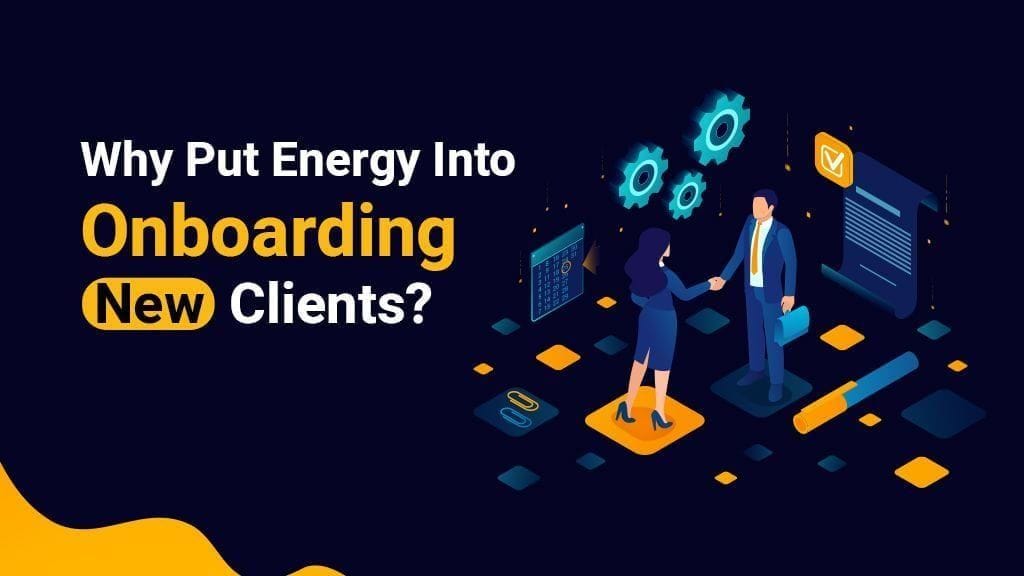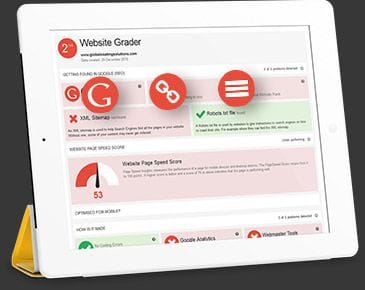Why Invest Energy in Onboarding New Clients?
)
The significance of a pleasant onboarding experience for client retention and loyalty is emphasized by the following statistics: 76% of consumers who have had a positive onboarding experience are more likely to return. This major observation emphasizes the importance of firms investing in a good onboarding process, which has a direct impact on long-term client engagement.
Furthermore, the evidence reveals that effective onboarding can increase client retention by up to 50%. This compelling evidence highlights the significant impact that a refined onboarding strategy can have on a company's success, emphasizing the importance of allocating resources to improving the customer onboarding journey in order to ensure customer satisfaction and loyalty in a competitive market landscape.
Investing substantial time, money, and effort in gaining new clients highlights the necessity of maximizing this investment by improving the onboarding process. Businesses can not only lengthen client engagement, but also enhance the possibility of subsequent purchases and referrals. Surprisingly, 90% of firms neglect this critical feature, which has significant benefits. Prioritizing an excellent onboarding process is a strategic move that can set a company apart and result in a higher return on initial customer acquisition investment. Especially if you utilize a technology that can automate the majority of this procedure, allowing you to perform it once and have the results sent indefinitely.
Increasing Client Onboarding Efficiency with Automated Email Marketing
Using emails to onboard new clients is a highly effective method, especially in terms of customer engagement. Email marketing, when used as the foundation of your onboarding process, provides a seamless, automated strategy that delivers value without demanding ongoing work. This automation enables businesses to create a series of educational, welcoming emails once and then reap the benefits of this system working diligently in the background, onboarding new clients on a regular basis.
Email's value as an onboarding tool should not be underestimated. Statistics demonstrate that onboarding emails generate some of the highest levels of client engagement. Specifically, welcome messages have a 42% higher read rate than ordinary emails. This increased degree of participation provides an excellent chance for firms to establish and strengthen communication connections with their customers. Businesses may begin creating confidence from the first interaction by exploiting the high engagement rates of welcome emails.
In a nutshell, automated email marketing for onboarding combines the simplicity of automation with the efficiency of personalized communication, allowing businesses to efficiently expand their onboarding process while building strong, trusted relationships with new customers.
9 Key Steps to Creating Engaging Onboarding Emails That Retain Customers
Crafting an effective onboarding email is critical in establishing the tone for your clients' experience with your product or service. Here's how to build one that engages and converts:
- Create an Eye-Catching Subject Line: The subject line of your onboarding email is the first thing people see. It should be intriguing enough to entice customers to open your email. Consider it the hook that hooks them in; it should be action-oriented, benefit-focused, and brief in order to grab their attention right away. For example, subject lines from companies such as Copy.ai, Adalo, and the Freelancers Union stand out because they are straightforward and guarantee value.
- Restate Your Value Proposition: Once you've gotten their attention, remind them why they chose you. Your email should clearly define the unique benefits of your product or service, emphasizing how it meets their wants or solves their problems. This reiteration of your value proposition reinforces the customer's decision to engage with your brand. You can also include a testimonial so that they can see firsthand how others have benefited from your product/service.
- Show the next onboarding steps: Outline the next steps to help your consumers navigate the initial setup procedure. Make the procedures for completing their profile, selecting preferences, or uploading relevant information simple and easy to follow. A basic approach helps to reduce friction when starting to use your service or product.
- Create the 'A-ha' Moment: Your goal is to swiftly get people to realise the value of your product/service—the "aha" moment. Highlight the main value of your offering and walk them through any necessary steps to experience it themselves. This is a critical moment for converting new users into loyal, engaged clients.
- Add Helpful Resources: Assist your clients by providing resources that will help them get the most out of your product or service. Include links to tutorial videos, FAQ pages, and blog posts directly in the email. This proactive approach guarantees that students have everything they need to succeed without having to seek assistance when problems emerge. (See below for some other suggestions.)
- Provide Customer Service Contact Information: Make sure your customers understand how to reach you if they require assistance. Incorporating personal contact information in your onboarding email not only develops trust, but also demonstrates that you are immediately available to assist, which increases customer loyalty. Also, introduce your team members personally, making the bond stronger than coming from a generic team, or info@support@, etc.
- Conclude with a call to action: End your email with a compelling call-to-action (CTA) that urges them to get involved and start utilizing your product. A clear, compelling CTA eliminates ambiguity about what to do next, making it easier for them to start their journey with your company.
- Personalize your message: Use the email marketing software to personalize the message with the person's name, business name, and even the products purchased - you are only limited by what you enter into the database. Personalised emails help people feel closer to you.
- Automate these emails and monitor the effects: Use your email marketing system to automate the process after they join your business or club - you can schedule a series of emails (trigger emails) to send x days after they join. Then, after running, set aside time quarterly to review the data to see how the emails are performing - check the click through rates and make any necessary changes to optimize the outcomes.
Key point: Do not overwhelm users with too much information.
All of your onboarding communications should be short and to the point. Your users are busy people, and if they open an email with a large amount of text, they are likely to skip it entirely. The less text you have, the more attention your call-to-action or other crucial elements will receive because they will not be crowded by all of the visual clutter.
By following these steps, you can create onboarding emails that not only welcome consumers but also provide them with everything they need to succeed as they begin using your product or service.
18 Additional ideas for your email series:
Including relevant content in your onboarding emails can greatly improve the customer experience. Here are some effective content ideas:
- Welcome Message: A pleasant introduction thanking the customer for selecting your service or product.
- Company Overview: Provide a brief overview of your company's mission, values, and distinguishing characteristics.
- Product or Service Information: The key characteristics and benefits of your product or service, suited to the customer's preferences or needs.
- Getting Started Guide: Step-by-step instructions or advice to assist clients in successfully using your product or service.
- Video Tutorials: Links to instructional videos that graphically illustrate how to use your product or service.
- User Tips and Best Practices: Practical suggestions or ideas for maximizing the value of your product or service.
- FAQs: Answers to frequent inquiries that new clients may have.
- Customer Support Information: Contact information, including email addresses, phone numbers, and business hours.
- Account Management Tools: Steps for managing their account, such as changing preferences, updating information, or adding services.
- Feedback Request: Encouragement to offer feedback on the onboarding process or their initial experiences with your product or service.
- Community Engagement: An invitation to participate in online forums, social media groups, or community events to engage with other people.
- Upcoming Features or Updates: A preview of upcoming features, updates, or products that customers can expect.
- Special deals or Promotions: Receive exclusive discounts or deals as a thank you for joining up.
- Case Studies or Testimonials: Success stories or testimonials from satisfied customers help to establish credibility and confidence.
- Personalised Recommendations: Based on their preferences or purchasing history, recommend further products or services that may be of interest.
- Request a referral: Ask pleased consumers to suggest others to your company.
- Request a Review: Encourage customers to provide feedback through reviews.
- Conduct a survey: Gather thorough feedback from clients to better your business.
Each email in your onboarding series should strive to educate, engage, and excite your new customers, making them feel valued and informed right off the bat.
What is the appropriate email sequence and frequency?
The quantity and frequency of emails in an onboarding sequence varies depending on your business model, product complexity, and customer path. However, a smart strategy might help you communicate effectively without overwhelming your new customers. Here are some broad guidelines to follow:
Number of Emails
- Three to five emails are usually plenty for a simple onboarding procedure. This range allows you to provide critical information without overwhelming your audience.
- For more complex items or services, up to 7-10 emails may be required. These can go into specific features, provide extensive guides, and increase engagement opportunities.
Frequency
- First email: Send soon after sign-up. This should be a welcome email that thanks the customer for choosing your service and explains what to expect next.
- Second email: Send it during the first 24 to 48 hours. This can include introducing essential features or outlining the first steps in getting started.
- Subsequent emails: Space these out across the next few days or weeks. The actual timing can vary depending on the intricacy of your product and the customer's requirements. A common strategy is to progressively reduce frequency, beginning with daily emails, then to every other day, and finally weekly, if needed.
Content Planning
- Early emails should focus on quick wins and key tasks that improve the customer's immediate experience.
- Middle Emails: Provide in-depth information about the product's features, benefits, and how to maximize its value.
- Later Emails: Encourage involvement, offer advanced tips, and perhaps introduce upsell chances.
| Tags:Lead GenerationOnline MarketingBusiness DevelopmentNews |




)
)
)
